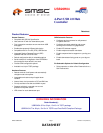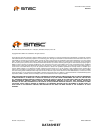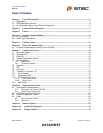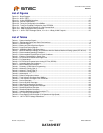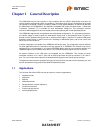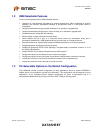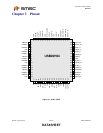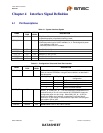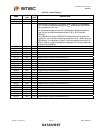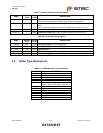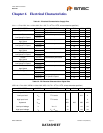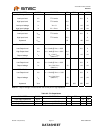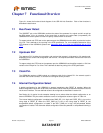
4-Port USB 2.0 Hub Controller
Datasheet
Revision 1.63 (03-30-07) Page 6 SMSC USB20H04
DATASHEET
1.2 OEM Selectable Features
The 4-Port Hub supports several OEM selectable features:
Operation as a bus-powered, self-powered or dynamic-powered hub. (When configured for dynamic
operation, the controller automatically switches to bus-powered mode if a local power source is
unavailable).
Configure downstream facing port power switching on an individual or ganged basis.
Configure downstream facing port over-current sensing on an individual or ganged basis.
Enable downstream facing port LED indicators.
Select multiple or single transaction translator mode.
Select whether the hub is part of a compound device (when any downstream facing port is
permanently hardwired to a USB peripheral device, the hub is part of a compound device).
Select the presence of a permanently hardwired USB peripheral device on a port by port basis.
Enable downstream facing ports a port by port basis.
Enable EOP generation of EOF1 when operating in full-speed mode, as described in Section 11.3.1 of
the USB 2.0 Specification.
Enable USB On-The-Go Session Request Protocol (SRP) support.
Configure the delay time for filtering the over-current sense inputs.
Configure the delay time until port power is good after the SetPortPower command is received.
Indicate the maximum current that the 4-port hub consumes from an upstream port.
Indicate the maximum current required for the hub controller.
1.3 Pin Selectable Options to the Default Configuration
The USB20H04 includes a default configuration for those applications where an external EEPROM or
SMBus device is not available to provide the configuration. This configuration may be adequate in some
applications. A pin selectable feature supports configuration as either a bus-powered hub or a
self-powered hub determined by the logic level of the SELF_PWR pin following reset.



